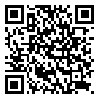Volume 14, Issue 3 (May-June 2015)
Payesh 2015, 14(3): 351-362 |
Back to browse issues page
Download citation:
BibTeX | RIS | EndNote | Medlars | ProCite | Reference Manager | RefWorks
Send citation to:



BibTeX | RIS | EndNote | Medlars | ProCite | Reference Manager | RefWorks
Send citation to:
Ahmad Haerian Ardakani, Mohammad Ali Morowati Sharifabad, Yasser Rezapour, Azadeh Pourghayumi Ardakani. Investigation of the relationship of oral health literacy and oral hygiene self-efficacy with DMFT and Gingival index in students of Ardakan University. Payesh 2015; 14 (3) :351-362
URL: http://payeshjournal.ir/article-1-238-en.html
URL: http://payeshjournal.ir/article-1-238-en.html
Ahmad Haerian Ardakani1 
 , Mohammad Ali Morowati Sharifabad2
, Mohammad Ali Morowati Sharifabad2 
 , Yasser Rezapour3
, Yasser Rezapour3 
 , Azadeh Pourghayumi Ardakani *4
, Azadeh Pourghayumi Ardakani *4 


 , Mohammad Ali Morowati Sharifabad2
, Mohammad Ali Morowati Sharifabad2 
 , Yasser Rezapour3
, Yasser Rezapour3 
 , Azadeh Pourghayumi Ardakani *4
, Azadeh Pourghayumi Ardakani *4 

1- Department of Periodontology, Faculty of Dentistry, Shahid Sadoughi, University of Medical Sciences-Yazd, Yazd, Iran
2- Department of Health Education and Promotion, Shahid Sadoughi University of Medical Sciences-Yazd, Yazd, Iran
3- Department of Counseling, Faculty of Psychology and Education, Ardakan University, Ardakan, Iran
4- Shahid Sadoughi University of Medical Sciences-Yazd, Yazd, Iran
2- Department of Health Education and Promotion, Shahid Sadoughi University of Medical Sciences-Yazd, Yazd, Iran
3- Department of Counseling, Faculty of Psychology and Education, Ardakan University, Ardakan, Iran
4- Shahid Sadoughi University of Medical Sciences-Yazd, Yazd, Iran
Abstract: (6833 Views)
Objective (s): Oral health literacy and oral hygiene self-efficacy are part of interpersonal factors witch beside environmental and social factors affect oral health. The aim of the present study was to determine the relationship of oral health literacy and oral hygiene self-efficacy with DMFT and Gingival index in students.
Methods: This was a cross-sectional and correlational study. Using categorical random sampling method, 281 students of Ardakan University were selected to participate in this study. Data was collected by oral health literacy instrument, oral hygiene self-efficacy questionnaire, DMFT and Gingival index. Pearson’s correlation test and stepwise regression analysis were applied to analyze the data.
Results: A significant negative correlation was observed between oral health literacy and oral hygiene self-efficacy and its dimensions with DMFT and Gingival index. The results of stepwise regression analysis showed that two dimensions of oral health literacy and oral hygiene self-efficacy had significant role in prediction of DMFT and Gingival index. Reading comprehension and brush self-efficacy had the highest and lowest influential role in the prediction of these indices respectively. Also, results showed that health literacy and oral hygiene self-efficacy are better predictors for DMFT than Gingival index.
Conclusion: Results of the present study showed that oral health literacy and oral hygiene self-efficacy have key role in the prediction of DMFT and Gingival index and that through enough education, especially in reading comprehension and floss self-efficacy; we can probably reduce the DMFT and Gingival index.
Methods: This was a cross-sectional and correlational study. Using categorical random sampling method, 281 students of Ardakan University were selected to participate in this study. Data was collected by oral health literacy instrument, oral hygiene self-efficacy questionnaire, DMFT and Gingival index. Pearson’s correlation test and stepwise regression analysis were applied to analyze the data.
Results: A significant negative correlation was observed between oral health literacy and oral hygiene self-efficacy and its dimensions with DMFT and Gingival index. The results of stepwise regression analysis showed that two dimensions of oral health literacy and oral hygiene self-efficacy had significant role in prediction of DMFT and Gingival index. Reading comprehension and brush self-efficacy had the highest and lowest influential role in the prediction of these indices respectively. Also, results showed that health literacy and oral hygiene self-efficacy are better predictors for DMFT than Gingival index.
Conclusion: Results of the present study showed that oral health literacy and oral hygiene self-efficacy have key role in the prediction of DMFT and Gingival index and that through enough education, especially in reading comprehension and floss self-efficacy; we can probably reduce the DMFT and Gingival index.
type of study: Descriptive |
Accepted: 2014/06/29 | ePublished ahead of print: 2015/05/10 | Published: 2015/05/15
Accepted: 2014/06/29 | ePublished ahead of print: 2015/05/10 | Published: 2015/05/15
| Rights and Permissions | |
 |
This work is licensed under a Creative Commons Attribution-NonCommercial 4.0 International License. |



